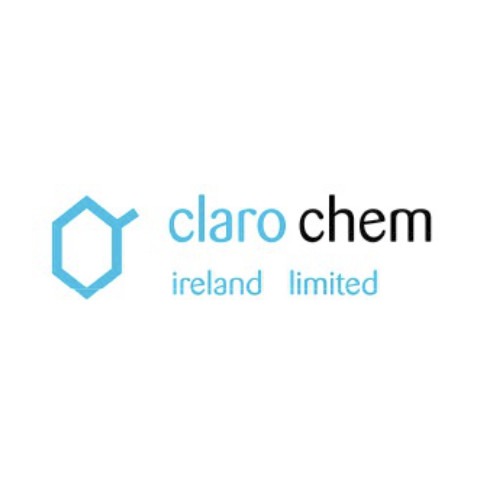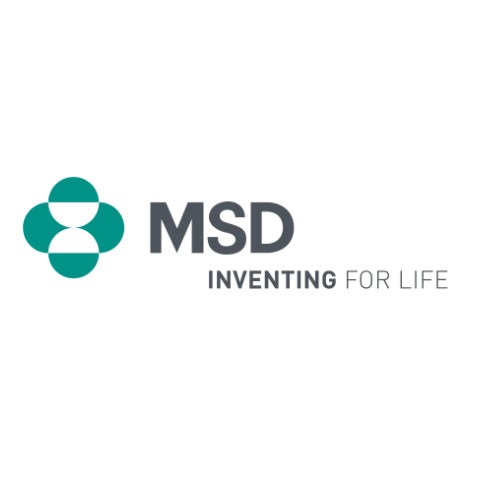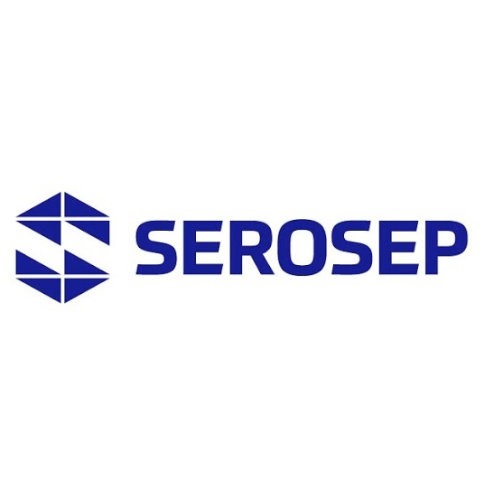
The Horizon 2020 Innovative Training Network (ITN) ClickGene was a research project in the field of click chemistry and gene therapy. The modification, activation, modulation, and repression of DNA functional domains brought an overwhelming potential for human health applications. The project studied drug-DNA Interactions using cutting-edge bioanalytical techniques including crystallization of DNA triplex structures, monitoring oxidative damage using NPLC analyses, and employing Oxford nanopore sequencing.
Partners: baseclick, Institute for Organic Synthesis and Photoreactivity, Institute of Organic Chemistry and Biochemistry Academy of Sciences of the Czech Republic, Ludwig-Maximilians-Universität München, University of Oxford, ATDbio, LipiNutragen, National Centre for Scientific Research “Demokritos”
Led by Prof. Andrew Kellett, SSPC Funded Investigator at Dublin City University, partnering with the Institute for Organic Synthesis and Photoreactivity, Institute of Organic Chemistry and Biochemistry Academy of Sciences of the Czech Republic, Ludwig-Maximilians-Universität München, University of Oxford, ATDbio, LipiNutragen and National Centre for Scientific Research “Demokritos”.
The Challenge
European expertise presently available in DNA-based chemical and biotechnology fields needs to be combined to provide young researchers with the appropriate knowledge and know-how to address the gap associated with these rapid scientific developments.
The Solution
ClickGene offered 14 PhD students the opportunity to develop and learn skills that are required by next-generation research leaders in biopharmaceutical, nanotechnology, biodiagnostic and related industries. The project partners provided cutting-edge resources at leading research facilities, universities and biopharmaceutical enterprises throughout the EU. The ClickGene research programme, involved world-leading chemists in combination with innovative SMEs and combined basic and translation research in order to develop revolutionary technology for personalised medicine.
ClickGene has succesfully
- Induced strand breaks in DNA and RNA compared with the current state-of-art gene editing nucleases found in zinc finger nucleases and TALENs
- Utilised cutting edge “click” chemistry to conjugate AMNs to sequence-selective nucleic acid targeting molecules such as zinc finger proteins and triplex forming oligonucleotides which can discriminate epigenetic bases (e.g. methylated and unmethylated sequences)
- Fabricated customised liposomal nanoparticle and nanocontainer delivery vehicles to transport targeted AMNs into the nucleus of selected human cells
- Produced a unique family of fluorogenic detector molecules that can monitor the presence of epigenetic base modifications in highly parallel PCR matrixes
Publications
Mapping the DNA Damaging Effects of Polypyridyl Copper Complexes with DNA Electrochemical Biosensors, In: Biomimetic Radical Chemistry and Applications, Chryssostomos Chatgilialoglu (Ed.), MDPI, Molecules | 2022, 27, 645, A. Banasiak, N. Zuin Fantoni, A. Kellett, J. Colleran
Click and Cut: a click chemistry approach to developing oxidative DNA damaging agents, Nucleic Acids Res. | 2021, 49, 18, 10289–1030, N. McStay, C. Slator, V. Singh, A. Gibney, F. Westerlund, A. Kellett
DNA-Targeted Metallodrugs: An Untapped Source of Artificial Gene Editing Technology, ChemBioChem | 2021, 22, 2184, N. Z. Fantoni, T. Brown, A. Kellett
Cover Feature: Polypyridyl-Based Copper Phenanthrene Complexes: Combining Stability with Enhanced DNA Recognition (Chem. Eur. J. 3/2021), Chem. Eur. J. | 2021, 27, 828, N. Z. Fantoni, Z. Molphy, S. O’Carroll, G. Menounou, G. Mitrikas, M. G. Krokidis, C. Chatgilialoglu, J. Colleran, A. Banasiak, M. Clynes, S. Roche, S. Kelly, V. McKee, A. Kellett
Polypyridyl-Based Copper Phenanthrene Complexes: Combining Stability with Enhanced DNA Recognition, Chem. Eur. J. | 2021, 27, 971, N. Z. Fantoni, Z. Molphy, S. O’Carroll, G. Menounou, G. Mitrikas, M. G. Krokidis, C. Chatgilialoglu, J. Colleran, A. Banasiak, M. Clynes, S. Roche, S. Kelly, V. McKee, A. Kellett
Development of Gene‐Targeted Polypyridyl Triplex Forming Oligonucleotide Hybrids, ChemBioChem | 2020, 21, 3563, N. Zuin Fantoni, B. McGorman, Z. Molphy, D. Singleton, S. Walsh, A. H. El-Sagheer, V. McKee, T. Brown, A. Kellett
A Click Chemistry Approach to Developing Molecularly Targeted DNA Scissors, Chem. Eur. J. | 2020, 26, 16782, T. Lauria, C. Slator, V. McKee, M. Müller, S. Stazzoni, A. L. Crisp, T. Carell, A. Kellett
Copper bis-Dipyridoquinoxaline is a Potent DNA Intercalator that Induces Superoxide-Mediated Cleavage via the Minor Groove, In: Biomimetic Radical Chemistry and Applications; Editor: Chryssostomos Chatgilialoglu; Publisher: MDPI, Basel, Switzerland | 2020, ISBN 978-3-03928-392-7, Z. Molphy, V. McKee, A. Kellett
Oxidative DNA Cleavage with Clip‐Phenanthroline Triplex Forming Oligonucleotide Hybrids, ChemBioChem. | 2020, 21(7): 991-1000, A. Panattoni, A.H. El-Sagheer, T. Brown, A. Kellett, M. Hocek
Molecular methods for assessment of non-covalent metallodrug–DNA interactions, Chem. Soc. Rev. | 2019, 48, 971-988, A. Kellett, Z. Molphy, C. Slator, V. McKee, N. Farrell
Polypyridyl-Based Copper Phenanthrene Complexes: Combining Stability with Enhanced DNA Recognition, Chemistry A European Journal | 2019, 25 (1), N. Fantoni, Z. Molphy, C. Slator, G. Menounou, G. Toniolo, G. Mitrikas, V. McKee, C. Chatgilialoglu, A. Kellett
Efficient DNA Condensation by a C3‐Symmetric Codeine Scaffold, ChemPlusChem | 2019, 84, 1, N. McStay, A. Reilly, N. Gathergood, A. Kellett
Innovative DNA-Targeted Metallo-prodrug Strategy Combining Histone Deacetylase Inhibition with Oxidative Stress, Mol. Pharmaceutics | 2018, 15 (11), T.J.P. McGivern, C. Slator, A. Kellett, C.J. Marmion
Genome Engineering with Synthetic Copper Nucleases , Synlett | 2018, 26/19, A. Kellett, N. Fantoni and T. Lauria
Di-copper metallodrugs promote NCI-60 chemotherapy via singlet oxygen and superoxide production with tandem TA/TA and AT/AT oligonucleotide discrimination, Nucleic Acids Research | 2018, 46 (6) C. Slator, Z. Molphy, V. McKee, C. Long, T. Brown, A. Kellett
Triggering autophagic cell death with a di-manganese(II) developmental therapeutic,Redox Biology | 2017, 12, 150-161, C. Slator, Z. Molphy, V. McKee, A. Kellett
Opioid architectures as new DNA binding molecules, Symmetry | 2017, 28 (2), 195-161, N. McStay, Z. Molphy, N. Gathergood, A. Kellett
strongC3-symmetric opioid scaffolds are pH-responsive DNA condensation agents, Nucleic Acids Research | 2017, 45 (2), 527-540, N. McStay, Z. Molphy, A. Coughlan, A. Cafolla, V. McKee, N. Gathergood, A. Kellett
Protein engineering with artificial chemical nucleases, Chem. Commun. | 2015, 51/65, 12908-12911, R. Larragy, J. Fitzgerald, A. Prisecaru, V. McKee, P. Leonard, A. Kellett
[Cu(o-phthalate)(phenanthroline)] Exhibits Unique Superoxide-Mediated NCI-60 Chemotherapeutic Action through Genomic DNA Damage and Michochondrial Dysfunction , ACS Chemical Biology | 2015, 11(1):159-71, C. Slator, N. Barron, O. Howe and A. Kellett
















